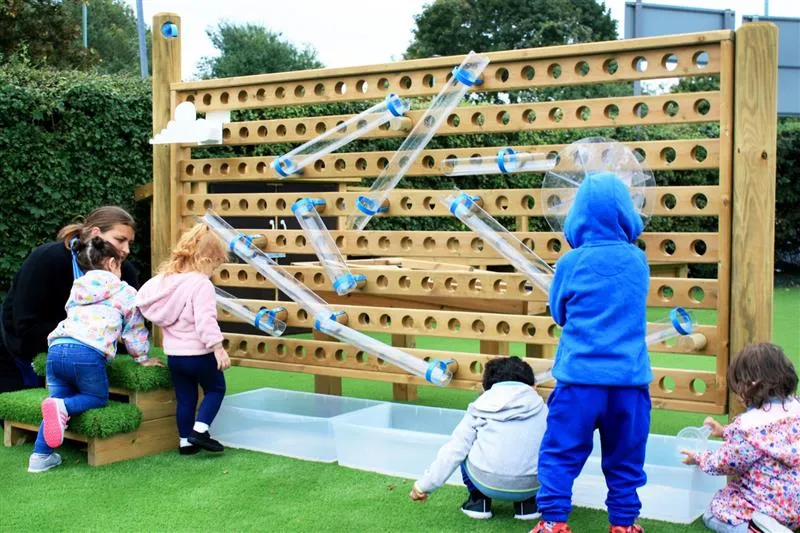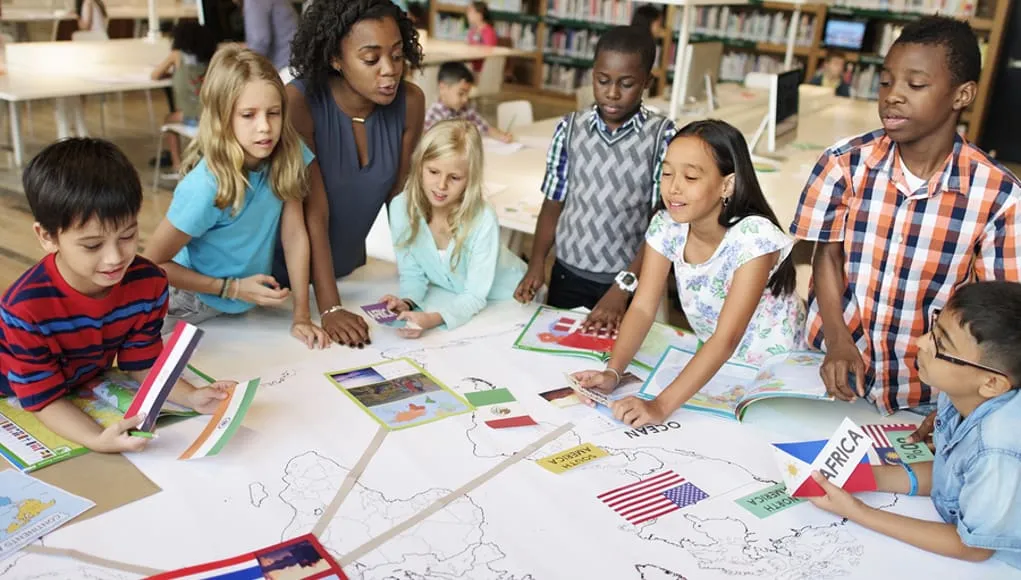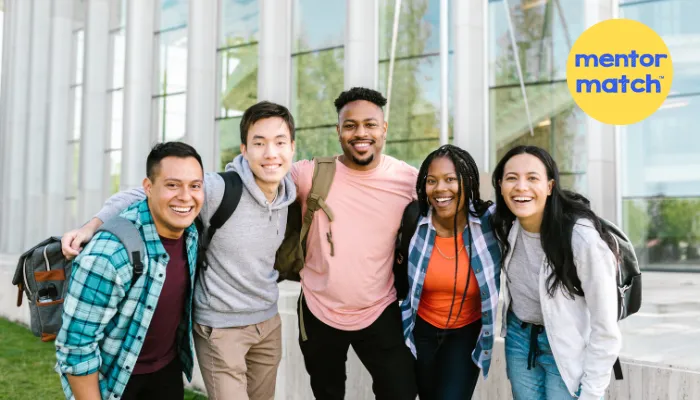
77.32% of parents see better grades in 3 months!
Let’s be real for a second.
As parents, how many times have we sat down with our kids, trying to help with homework, only to wonder,
“Is this really preparing them for life?”
We want our children to thrive, to learn skills that go beyond just memorizing facts for the next test.
But when we think about how schools can improve, we usually hear the same things: more homework, stricter rules, better test scores.
Yawn, right?
How can we improve schools if all we do is recycle the same ideas?
Now, picture this. Imagine if instead of cramming for tests, your child was learning how to build robots in a STEM Playground or leading a school-wide discussion on what should be served in the cafeteria. Or what if your middle-schooler came home after a "Failure Day," excited to talk about all the things that went wrong with their project and what they learned from it? Sounds a little more interesting than standard worksheets? Yeah, I thought so!
We all want our children to be prepared for the real world, but it’s time we rethink the way schools operate.
What if we shifted away from just textbooks and tests, and instead focused on sparking curiosity, building leadership, and embracing failure as part of the learning process?
Believe us, it's not as crazy as it sounds.
Schools are changing, and it’s up to us to push for these exciting, out-of-the-box ideas that can make education more relevant and engaging for our kids.
So, buckle up!
We’re about to explore some fun, fresh, and totally different ways to revamp schools and improve student performance. Spoiler alert: it’s not about adding more homework!
Ready? Let’s dive in!
Ways to Improve Schools And Student Performance

Imagine if instead of cramming for tests, your child was learning how to build robots in a STEM Playground or leading a school-wide discussion on what should be served in the cafeteria.
Or what if your middle-schooler came home after a "Failure Day," excited to talk about all the things that went wrong with their project and what they learned from it?
Sounds a little more interesting than standard worksheets?
Yeah, we thought so!
Let’s explore some creative ways to improve schools and boost student performance.
Also Read: Teaching Innovation through Curriculum Alignment in Schools
1. Design Schools Around Curiosity Zones
Schools are traditionally divided into classrooms, with students moving from one subject to another.
But what if we broke that structure and created Curiosity Zones?
Picture walking into a school where students could rotate between different "learning hubs," each dedicated to a particular theme, like a STEM Playground for tech lovers, an Art Lab for budding Picassos, or a Storytelling Hub for young authors.
Instead of sitting through rigid lessons, students could explore their interests and passions while still covering all subjects.
This curiosity-driven approach would make learning more fun and engaging.
Children would be encouraged to ask questions and think critically, rather than just memorizing facts for the next test.
It's about making learning something your child actually wants to dive into!
Example:
Let’s say a child who loves building things can spend more time in the STEM Playground, learning math and science through hands-on projects like building robots.
That same student may struggle in traditional math classes but excel when the subject is tied to something they’re passionate about.
How can we improve schools if not by allowing kids to tap into their natural curiosity?
2. Student-Led Schools
We’re all used to seeing teachers and administrators make the big decisions in schools.
But what if students themselves had more say?
A school where the kids ran the show—Student Governance Councils making decisions about school policies, class projects, and even extra-curricular activities.
This concept could drastically change the school culture, making students feel more responsible for their environment.
They’d be more motivated to attend school, knowing their voice matters.
When students take charge, they also build leadership and problem-solving skills—two things that don’t come from a textbook!
Example:
Let’s say a group of middle schoolers decides they want healthier options in the cafeteria.
With a Student Governance Council, they could research options, meet with the food provider, and implement changes.
Giving students this responsibility helps them feel more involved in their education, boosting both performance and morale.
How can we improve schools?
By giving kids a real stake in the system!
3. Project-Based Teacher Training
Teachers are the backbone of any school, but traditional teacher training often doesn’t prepare them for real-world classroom challenges.
Instead of theory-heavy courses, how about immersing teachers in project-based simulations?
Teachers could practice teaching to artificial-intelligence-powered student avatars that mimic real-life classroom scenarios.
These simulations would help teachers refine their techniques in real-time, allowing them to handle complex situations with confidence.
Example:
Picture a teacher practicing how to manage a disruptive class or dealing with students who learn at different speeds.
These “practice runs” can help them develop strategies that are more effective, ultimately improving the quality of education and student performance.
How can we improve schools if not by better preparing teachers to handle the dynamic nature of modern classrooms?
4. Silent Periods for Cognitive Reboot
In a world where everyone is constantly plugged in, silence is becoming a rare commodity.
Schools could introduce daily Silent Hours or Mindfulness Sessions where students and teachers alike take a break from the noise to reflect or engage in quiet activities.
These quiet periods would allow for mental rebooting, reducing stress and improving focus.
During these silent periods, students could practice mindfulness, meditate, or even work on calming activities like journaling or art.
Studies show that moments of silence can significantly improve concentration and memory retention.
Example:
A high school implements a 20-minute silent session right after lunch.
After spending the first half of the day in back-to-back classes, this quiet period helps students relax and recharge, making them more alert and ready to focus on their afternoon lessons.
How can we improve schools?
By giving students the mental space they need to succeed.
Looking for a study boost?
MentorMatch provides personalized support to keep your child’s mind sharp and stress-free. Perfect for keeping those silent moments productive!
5. Failure Days
Schools usually focus on avoiding failure, but what if we flipped that idea on its head and actually celebrated failure?
Introducing Failure Days—days specifically designed for students to take risks and potentially fail without any consequences.
This could encourage students to think outside the box, experiment with new ideas, and learn from their mistakes without fear of judgment.
Failing is a part of life, and if we teach kids how to handle failure early on, they’ll be better prepared to overcome obstacles later.
A Failure Day could involve activities where students tackle challenges they might not otherwise attempt because of the risk of failure.
The focus is on learning through trial and error, not on getting it right the first time.
Example:
A group of students is tasked with creating a contraption to safely drop an egg from a second-story window without it breaking.
Half the eggs break, but instead of getting discouraged, the students analyze why their designs didn’t work and tweak them for a second attempt.
How can we improve schools if not by teaching students that failure is simply a stepping stone to success?
6. Community Immersion Learning

Let’s take education outside the classroom.
Schools can partner with local businesses, artists, scientists, and community leaders to create Community Immersion Programs.
Instead of traditional lessons, students would spend time learning from real-life professionals in their communities.
This makes education more relevant and helps students see how their lessons apply to the real world.
Example:
Imagine students learning geometry by working with a local architect or exploring biology through internships at a nearby nature reserve.
These experiences provide hands-on learning and demonstrate the value of education beyond the classroom walls.
How can we improve schools?
By showing students that learning doesn’t just happen inside the four walls of a classroom.
7. Redesign Report Cards with Skills Mastery Badges
Grades aren’t always the best measure of a child’s abilities.
So why not redesign report cards to include Skills Mastery Badges?
These badges can track not only academic performance but also important life skills like teamwork, leadership, and emotional intelligence.
Students could earn badges for completing projects, solving problems, or demonstrating creativity.
This system would give a more well-rounded view of a student’s progress and encourage them to develop a wider range of skills.
Example:
A student who shows empathy by helping classmates resolve conflicts could earn a “Master Negotiator” badge, while another who consistently leads group projects could receive a “Team Leader” badge.
How can we improve schools if not by recognizing the full scope of a student’s talents?
Also Read: 10 Proven Methods To Improve Schools and Teaching Skills
8. Cognitive Diversity Classrooms
Lastly, we could organize classrooms based on Cognitive Diversity rather than age or ability.
Students could be grouped according to their learning styles—visual, auditory, kinesthetic—and their cognitive strengths and weaknesses.
This approach fosters collaboration as students help one another by complementing each other’s skills.
Example:
A student who excels in creative thinking might work alongside a peer who has strong analytical skills.
Together, they balance each other out and help each other grasp new concepts more effectively.
How can we improve schools if not by teaching students to value and use their cognitive diversity?
Now that we've explored some creative ways to transform schools and boost student performance, let’s wrap it all up with a final thought on how these changes can truly shape the future of education.
Wrapping Up
The real question isn’t just
"How can we improve schools?" but how can we reshape them to prepare students for the ever-changing world they’re stepping into?
By embracing innovative, out-of-the-box ideas, schools can become dynamic environments that support curiosity, resilience, and real-world skills—not just academic achievement.
If we want our children to thrive in school, we must be willing to think differently, challenge the status quo, and create learning spaces that nurture the whole child—not just their ability to ace a test!
And if you're looking for a tutoring platform that embraces these out-of-the-box approaches, MentorMatch is your go-to.
It's all about personalized learning, tapping into your child’s strengths, and helping them thrive—not just ace that next exam!



.png)
.webp)
.webp)